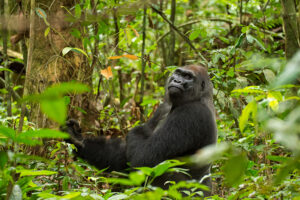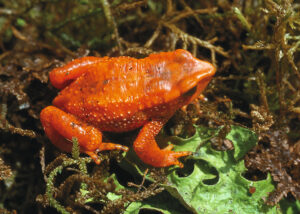
The Living Earth Collaborative at Washington University in St. Louis has announced the recipients of its third round of seed grant funding.
"We're delighted at the variety of projects funded, both in terms of questions addressed and where in the world the work will take place," said Jonathan Losos, the William H. Danforth Distinguished Professor of biology in Arts & Sciences and director of the Living Earth Collaborative. "And we're equally delighted in the diversity of scientists receiving these grants, representing a broad swath of the St. Louis biodiversity community.
"This is an incredibly exciting set of projects that highlights the broad sweep of research and conservation activities of Living Earth Collaborative's Biodiversity Fellows," Losos continued.
"It includes radio-tracking many animal species in Forest Park to see how they live in an urban setting; evaluating how citizen science projects like a local effort to monitor backyard bees change the conservation-related attitudes and behaviors of participants; and exciting international field work on genetics and disease ecology of frogs in Ecuador, apes in the Congo and trees in the Andes."
Seed grant investigators come from seven St. Louis area institutions, including researchers from four different departments in three schools at Washington University. The projects and local recipients are:
- Going Wild in Forest Park: The Movement of Wildlife and Disease in an Urban Food Web. Anthony Dell (National Great Rivers Research and Education Center); Stephen Blake and Jason Knouft (Saint Louis University [SLU]); Stan Braude (Washington University, Department of Biology in Arts & Sciences); Sharon Deem (Saint Louis Zoo); Amy Witt (Forest Park Forever)

Atelopus frogs are among the focal species of a new collaboration focused on critically endangered or possibly extinct Ecuadorean frogs using eDNA. (Photo courtesy Living Earth Collaborative) The Search for Critically Endangered or Possibly Extinct Ecuadorean Frogs using eDNA Analyses. Christine Edwards (Missouri Botanical Garden); Mark Wanner and Lauren Augustine (Saint Louis Zoo)
- Collaborating with Community Scientists to Improve Conservation: A Case Study with Bee Visitation Networks. Nicole Miller-Struttmann and Eric Goedereis (Webster University); Erin Tate, Mike Dawson and Ed Spevak (Saint Louis Zoo); Gerardo Camilo (SLU); Bob Coulter (Missouri Botanical Garden)
- Protecting Biodiversity and Human Health through Wild Edible Plants of Alandraza-Agnalavelo Sacred Forest, Madagascar. Tabita Randrianarivony and Armand Randrianasolo (Missouri Botanical Garden); Lora Iannotti (Washington University, Brown School)
- Using iDNA to Increase the Protected Status of the Djeke Triangle and Enhance Disease Surveillance in the Congo Basin. Crickette Sanz (Washington University, Department of Anthropology in Arts & Sciences); Peter Fischer (Washington University, School of Medicine); Maris Brenn-White, Sharon Deem and Heidi Hellmuth (Saint Louis Zoo)
- Testing the Role that Biotic Interactions Play in Shaping Elevational-Diversity Gradients: An Ecological Metabolomics Approach. Jonathan Myers and David Henderson (Washington University, Department of Biology in Arts & Sciences); J. Sebastián Tello (Missouri Botanical Garden); Nathan Muchhala and Belen Alvestegui (University of Missouri-St. Louis).
Learn more about the projects on the Living Earth Collaborative website.
 The Living Earth Collaborative is a center for biodiversity built from a partnership among three leading institutions in the study of plant and animal science - Washington University, the Missouri Botanical Garden and the Saint Louis Zoo.
The Living Earth Collaborative is a center for biodiversity built from a partnership among three leading institutions in the study of plant and animal science - Washington University, the Missouri Botanical Garden and the Saint Louis Zoo.
Its mission is to celebrate the diversity of living organisms and promote further understanding of the ways humans can help to preserve the varied natural environments that allow plants, animals and microbes to survive and thrive. The center exists as a hub that facilitates interdisciplinary research among scholars across a wide range of fields.
In three years, the Living Earth Collaborative has funded 23 projects involving 62 investigators from nine local institutions. Within Washington University, investigators hail from five schools: Arts & Sciences, the Brown School, the McKelvey School of Engineering, the Sam Fox School of Design & Visual Arts and the School of Medicine.






